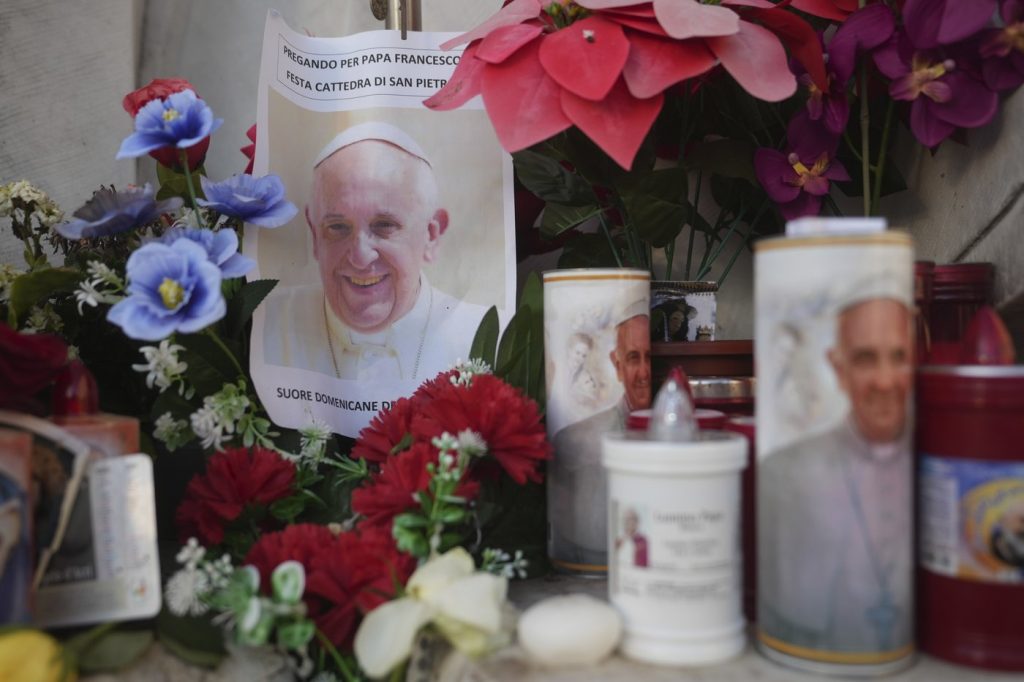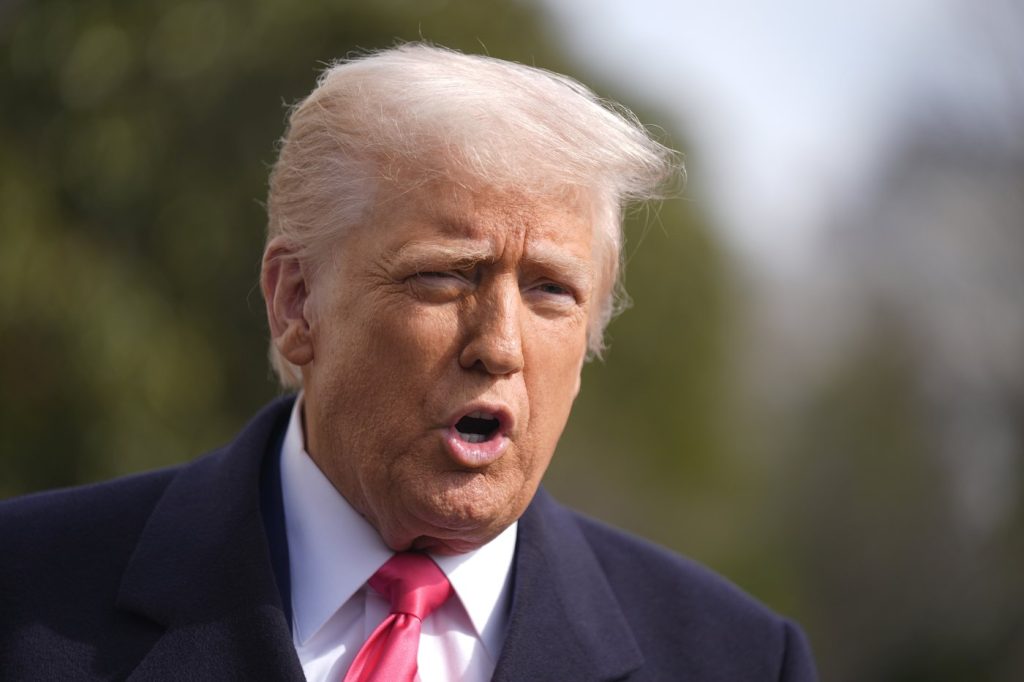Trump says 25 per cent tariffs coming for Canada on Saturday, still deciding whether to tax oil
Posted Jan 30, 2025 2:32 pm.
Last Updated Jan 30, 2025 7:07 pm.
U.S. President Donald Trump says he will decide Thursday night whether to include oil in his tariff plan as he confirmed his intention to impose devastating duties on Canadian imports on Saturday.
“Because they send us oil, we’ll see,” Trump told reporters while signing executive actions in the Oval Office Thursday afternoon.
“It depends on what the price is. If the oil is properly priced, if they treat us properly — which they don’t.”
Trump initially claimed his 25 per cent tariff threat was in response to what he called the failure by Canada and Mexico to curb the illegal flow of people and drugs across the border.
His complaints have since expanded far beyond border security. On Thursday, Trump repeated his objections to trade deficits with both countries.
The president said the tariffs “may or may not rise with time.”
The risk of tariffs on Canadian and Mexican oil could undermine Trump’s repeated pledge to lower overall inflation by reducing energy costs. Costs associated with tariffs could be passed along to consumers in the form of higher gasoline prices — an issue that Trump placed at the center of his Republican presidential campaign as he vowed to halve energy costs within one year.
“One year from Jan. 20, we will have your energy prices cut in half all over the country,” Trump said at a 2024 town hall in Pennsylvania.
AP VoteCast, an extensive survey of the electorate, found that 80 per cent of voters identified gas prices as a concern. Trump won nearly 6 in 10 voters who said they worried about prices at the pump.
The United States imported almost 4.6 million barrels of oil daily from Canada in October and 563,000 barrels from Mexico, according to the Energy Information Administration. U.S. daily production during that month averaged nearly 13.5 million barrels a day.
Matthew Holmes, executive vice president and chief of public policy at the Canadian Chamber of Commerce, said Trump’s tariffs would “tax America first” in the form of higher costs.
“This is a lose-lose,” Holmes said. “We will keep working with partners to show President Trump and Americans that this doesn’t make life any more affordable. It makes life more expensive and sends our integrated businesses scrambling.”
But Trump showed no concerns that import taxes on the United States’ trading partners would have a negative impact on the U.S. economy, despite the risk shown in many economic analyses of higher prices.
“We don’t need the products that they have,” Trump said. “We have all the oil you need. We have all the trees you need, meaning the lumber.”
Finance Minister Dominic LeBlanc sent a video describing Canada’s border security efforts to Howard Lutnick, Trump’s nominee for commerce secretary — part of Canada’s pitch to avoid the devastating duties.
LeBlanc’s office confirmed the three-minute video was texted to Lutnick Wednesday evening after the billionaire financier’s Senate confirmation hearing.
Lutnick told senators Wednesday that Trump’s threatened 25 per cent across-the-board duties would be an emergency measure to achieve border security — and could be followed by more tariffs in the future.
Lutnick said he believes Canada and Mexico are “acting swiftly” on border security and “and if they execute it, there will be no tariff and if they don’t, then there will be.”
LeBlanc met Lutnick at Mar-a-Lago late last year after he and Prime Minister Justin Trudeau travelled there for a dinner with Trump a few days after the president made his initial tariff threat.
LeBlanc’s office said the video was sent along with a “personal message” to add context on Canada’s work to shore up the border. The spokesperson said the message was not part of any official communication plan.
The minister will meet with Lutnick but not until after his nomination is confirmed.
LeBlanc’s outreach comes as Foreign Affairs Minister Mélanie Joly is in Washington, D.C. connecting with American officials and lawmakers. On Thursday, she was set to meet Republican senators Pete Ricketts and Lisa Murkowski and Democrat senators Tim Kaine and Maria Cantwell.
Public Safety Minister David McGuinty and Immigration Minister Marc Miller were travelling to Washington Thursday for meetings with various senators and members of Trump’s team.
The three ministers could also meet with Trump’s border czar Tom Homan on Friday afternoon, but a meeting has not been finalized.
Trump didn’t implement the duties on his first day back in office, as he’d vowed to do, but later said they’d hit both countries on Feb. 1.
The illegal traffic of drugs and people over Canada’s border is miniscule compared to the traffic over the U.S.-Mexico border. Still, Canada moved rapidly to appease Trump’s concerns with a $1.3-billion border security plan.
There are additional helicopters and drones in the sky above the border and officers with canine units on the ground. Provincial governments have also boosted border resources.
The president also said that China would pay tariffs for its exporting of the chemicals used to make fentanyl. He has previously stated a 10 per cent tariff that would be on top of other import taxes charged on products from China.
Oil prices were trading at roughly $73 a barrel on Thursday afternoon. Prices spiked in June 2022 under President Joe Biden to more than $120 per barrel, a period that overlapped with overall inflation hitting a four-decade high that fueled a broader sense of public dissatisfaction with the Democratic administration.
Gas prices are averaging $3.12 a gallon across the United States, roughly the same price as a year ago, according to AAA.
Later on Thursday, Trump threatened more tariffs against countries looking at alternatives to the U.S. dollar as a means of global exchange.
The president previously made the same threat in November against the so-called BRICS group, which includes Brazil, Russia, India, China, South Africa, Egypt, Ethiopia, Iran and the United Arab Emirates.
Russian President Vladimir Putin has suggested that sanctions against his country and others mean that nations need to develop a substitute for the dollar.
“We are going to require a commitment from these seemingly hostile Countries that they will neither create a new BRICS Currency, nor back any other Currency to replace the mighty U.S. Dollar or, they will face 100% Tariffs, and should expect to say goodbye to selling into the wonderful U.S. Economy,” Trump posted on social media.








